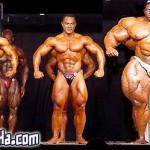The prevalence of men lacking testosterone is far more widespread than is believed by most doctors. The usual test for measuring testosterone levels is the total testosterone blood test. The problem with this test is that it measures the level of testosterone bound to a protein called sex-hormone binding globulin (SHBG). The significance of this is that the 98% of testosterone bound to this binding protein is inactive. Only the 2% not bound to SHBG can interact with steroid cell receptors. Testosterone also binds to another protein in the blood called albumin, and this bind is much looser than that of SHBG, and as such, the testosterone bound to albumin can also be considered an active form of the hormone. But the primary problem of the usual total testosterone blood test is that you can show normal levels, yet still be deficient in free testosterone, or the active form of the hormone. Conversely, you can show low total testosterone levels, yet have normal levels of free testosterone, but you won’t know this unless you’re tested for free testosterone. The question arises: why don’t doctors just measure free testosterone levels? The answer is that until recently, tests that measure free testosterone levels in the blood have been notoriously inaccurate. But there is an accurate test called the equilibrium analysis test that does accurately gauge free testosterone levels, but it is rarely ordered by most physicians, who have been taught not to trust tests that measure free testosterone levels, even though these same doctors have been taught in medical school that only free testosterone levels represent the active form of testosterone in cells.
The extent of lack of free testosterone in men is illustrated by a recently published study. The study analyzed free testosterone levels in 1,849 men, with 1,451 of them being nondiabetic and 398 being diabetic. All the men in the study were under age 45. Testosterone is thought to drop significantly past age 40 in most men. The study used the equilibrium analysis technique to measure free testosterone levels in the men. The results showed that below normal free testosterone levels were common. Specifically, 26% of the lean men, 29% of the overweight men, and 40% of the overweight diabetic men showed low free testosterone levels. Diabetic men showed the lowest levels of free testosterone. The older the subject, the lower the free testosterone level was, along with higher levels of SHBG that bind testosterone in the blood. Thus, 40% of obese nondiabetic men, and 50% of obese diabetics under age 45 show low free testosterone levels. What’s interesting about this study is that prior studies of diabetic men that measured total testosterone levels found higher than normal levels of total testosterone in the men, indicating just how inaccurate tests of total testosterone are in relation to the true picture of active or free testosterone in men.
Dhindsa S, et al. Testosterone concentrations in diabetic and nondiabetic obese men.Diabetes Care 2010;33:1186-92.
What natural supplements can raise free testosterone levels? Find out in my e-book, Natural Anabolics,at jerrybrainum.com




















You must be logged in to post a comment Login